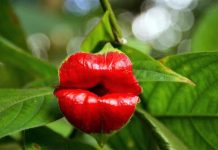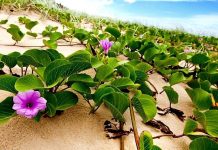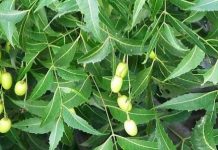Family: Solanaceae
Synonym:Physalis parviflora R. Br.
Bengali/Vernacular name: Bontepari, Phutka, Tepari, Morich phul, Foska bugun, Fotka.
Tribal name: Pitting gulu, Pitus (Chakma); Fotokci (Chak); Ambichok, Sisitappa, Thepa (Garo); Bakbakum (Hajong); Tumplang (Khumi); Fwa-lowk-shi, Faooma, Afang falow (Marma); Pukki (Tripura).
English name: Cape gooseberry, Winter cherry, Insipid physalis.
Description of the plant: An erect, branched, hairy annual herb, up to 90 cm tall. The branches terete and often tinged with purple; the ultimate ones slightly angular.Leaves ovate, 5-8 cm long, 3-5 cm wide, with pointed tip, rounded, or slightly heart-shaped base, nearly entire or faintly undulately lobed margins.Flowers solitary, axillary; corolla pale yellow, with 5 large, purple spots at the base inside. Fruit a berry, 1 cm across, ovoid.
Plant parts used: Leaf, fruit, root.
Herbal uses: A paste made with the plant is applied to the forehead for headache and infected skin for itching to treat it.
A fresh juice is extracted from roots of the plant is taken thrice a day (5 ml amount each time) for three days to treat fever.
A decoction made with the roots of the plant is drunk to treat hypertension and
diabetes.
The roots are chewed and applied as a poultice
to the lower abdomen in order to reduce pain.
Fruits of the plant are used to treat dropsy, urinary diseases, gout, swelling pain of the throat, and bronchitis.
Decoction prepared from the plant is advised to take as a remedy for cancer.
A fresh juice extracted from leaves of the plant mixed with mustard oil and water; it has been used as a remedy for earache.
Paste prepared from leaves of the plant is applied to the throat twice a day for three days to treat tonsillitis.
Distribution: The species sparsely occurs throughout the country.
Is this plant misidentified? If yes, please tell us….















… [Trackback]
[…] Find More Info here to that Topic: natureinfo.com.bd/physalis-minima-l/ […]